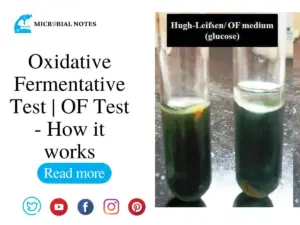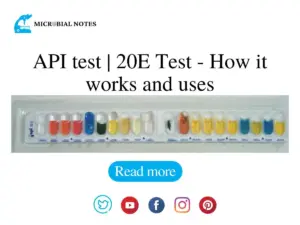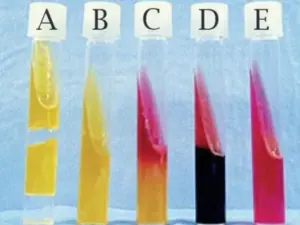Introduction
The nitrate reduction test is a microbiological test used to determine the ability of microorganisms to reduce nitrate to nitrite. It is a part of the biochemical tests used to identify bacterial species. Nitrate reduction test is widely used in the food industry, water quality testing, and clinical microbiology.
Principle of Nitrate Reduction Test
The principle of nitrate reduction test is based on the ability of microorganisms to reduce nitrate to nitrite, nitric oxide, nitrogen dioxide, ammonia, or nitrogen gas. The reaction involves the transfer of electrons from the electron donor to the nitrate molecule. The nitrate molecule acts as an electron acceptor in this reaction. The nitrate reduction reaction can be summarized as follows:
NO3- + e- → NO2- + H2O
The nitrite produced in the reaction is detected by adding sulfanilic acid and α-naphthylamine to the culture medium. The nitrite reacts with sulfanilic acid to form a diazonium salt, which then reacts with α-naphthylamine to form a red-colored azo dye. The presence of a red color indicates a positive result for the nitrate reduction test.
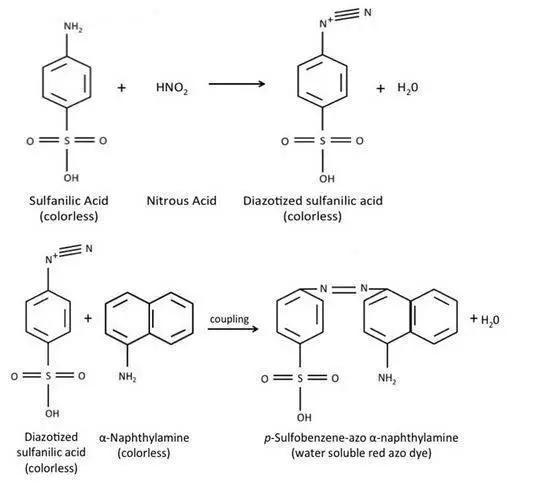
Materials and Equipment
The materials and equipment required for the nitrate reduction test are as follows:
- Nutrient broth
- Nitrate broth
- Reagents: sulfanilic acid, α-naphthylamine
- Test tubes
- Inoculating loop
- Incubator
- Distilled water
Procedure of Nitrate Reduction Test
The procedure for the nitrate reduction test is as follows:
- Inoculate a loopful of the test organism into a tube of nutrient broth and incubate at 37°C for 18-24 hours for bacterial growth.
- Transfer a loopful of the culture to a tube of nitrate broth and incubate at 37°C for 24-48 hours.
- After incubation, add 1-2 drops of sulfanilic acid and 1-2 drops of α-naphthylamine to the broth.
- Observe the color of the broth. If the broth turns red, it indicates a positive result for the nitrate reduction test. If there is no color change, proceed to step 5.
- Add a small amount of zinc powder to the broth. If the broth turns red, it indicates that nitrate was not reduced to nitrite. If there is no color change, it indicates that nitrate was reduced to a nitrogenous compound other than nitrite.
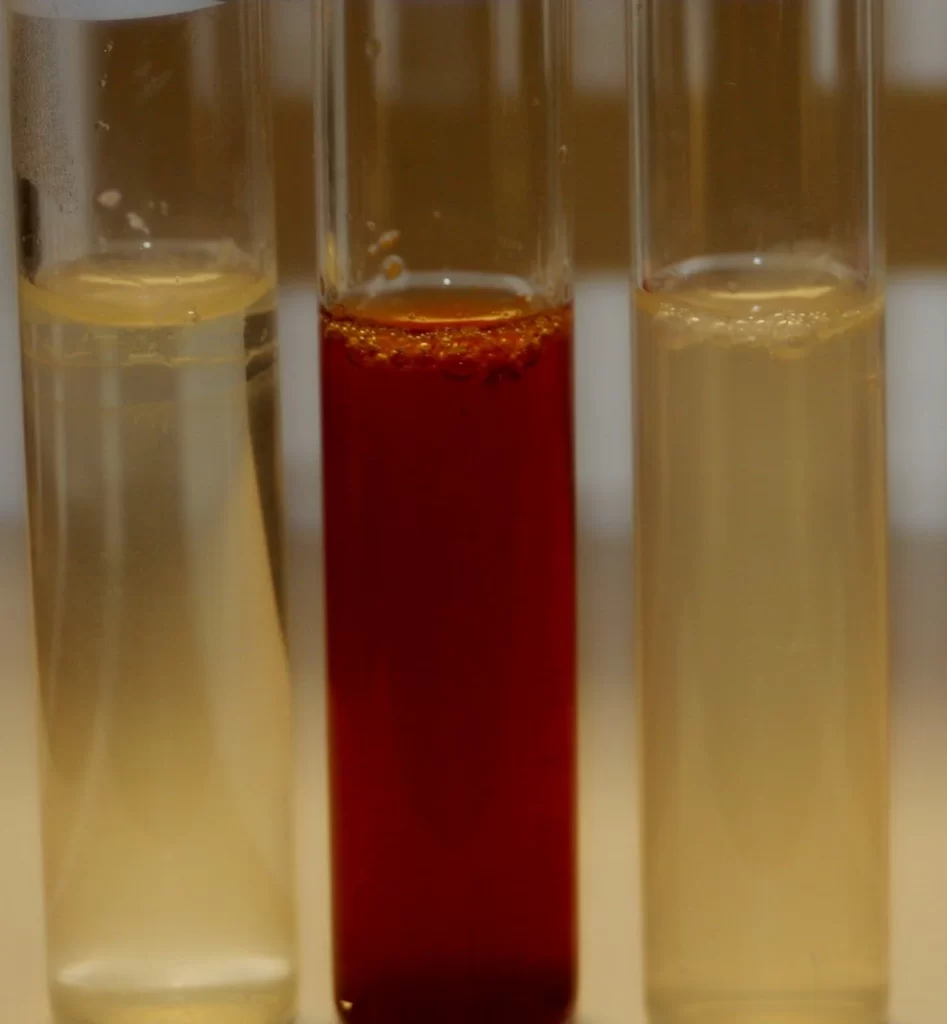
Interpretation of Nitrate Reduction Test
The interpretation of nitrate reduction test is based on the color of the broth after the reagents are added.
Positive results
If the broth turns red, it is a positive result for nitrate reduction test, indicating that the organism can reduce nitrate to nitrite.
Negative results
If there is no color change after adding the reagents, it is necessary to add a small amount of zinc powder to the broth.
If the broth turns red after adding zinc powder, it indicates that nitrate was not reduced to nitrite. If there is still no color change, it suggests that nitrate was reduced to a nitrogenous compound other than nitrite.
Limitations of Nitrate Reduction Test
Although nitrate reduction test is a simple and rapid test, it has certain limitations.
One of the main limitations is that the test can only detect the ability of microorganisms to reduce nitrate to nitrite, nitric oxide, nitrogen dioxide, ammonia, or nitrogen gas. It cannot identify the exact nitrogenous compound produced by the microorganisms.
Another limitation is that certain microorganisms, such as Pseudomonas aeruginosa, may reduce nitrate to nitrogen gas without producing nitrite. Therefore, a negative result for nitrate reduction test does not always indicate the absence of nitrate reduction.
Applications of Nitrate Reduction Test
Nitrate reduction test has several applications in microbiology. It is commonly used to identify bacterial species, especially those that can reduce nitrate to nitrite. Some of the applications of nitrate reduction test are as follows:
Identification of Enterobacteriaceae: Nitrate reduction test is used to differentiate between members of the family Enterobacteriaceae, such as Escherichia coli, Klebsiella pneumoniae, and Salmonella typhimurium.
Food industry: Nitrate reduction test is used to detect the presence of nitrate-reducing bacteria in food products, such as meat and dairy products. The presence of these bacteria can cause spoilage and pose a health risk to consumers.
Water quality testing: Nitrate reduction test is used to monitor the quality of drinking water and wastewater. Nitrate-reducing bacteria can convert nitrates to nitrogen gas, which can cause a decrease in dissolved oxygen levels in water bodies and lead to eutrophication.
Clinical microbiology: Nitrate reduction test is used to identify bacterial species that can cause infections, such as Pseudomonas aeruginosa and Staphylococcus aureus.
Variations of Nitrate Reduction Test
There are several variations of nitrate reduction test, including:
Nitrate reduction with Durham tube: In this variation, a Durham tube is placed in the nitrate broth to trap the gas produced by nitrate reduction.
Modified nitrate reduction test: This test involves adding zinc powder and acetic acid to the nitrate broth to enhance the detection of nitrate reduction.
Rapid nitrate reduction test: This test involves adding a colorimetric reagent directly to the culture plate to detect nitrate reduction.
Quality Control of Nitrate Reduction Test
To ensure the accuracy and reliability of nitrate reduction test results, it is essential to perform quality control measures. Some of the quality control measures that can be employed are as follows:
Use of positive and negative control strains: Positive and negative control strains should be included in each batch of nitrate reduction test to ensure that the reagents and procedures are working correctly.
Use of standardized reagents: Only standardized reagents should be used in nitrate reduction test to ensure the consistency of results.
Proper incubation: The culture should be incubated at the correct temperature and time to ensure the accuracy of the results.
Troubleshooting Nitrate Reduction Test
If the results of nitrate reduction test are inconclusive or inconsistent, it may be necessary to troubleshoot the test. Some of the troubleshooting measures that can be taken are:
Check the pH of the nitrate broth: If the pH of the nitrate broth is too high or too low, it may affect the results of the test.
Check the age of the culture: If the culture used for nitrate reduction test is too old, it may not produce a reliable result.
Check the purity of the culture: If the culture is contaminated with other microorganisms, it may affect the results of the test.
Repeat the test: If the results are inconclusive, it may be necessary to repeat the test using fresh reagents and culture.
Safety Considerations
Nitrate reduction test involves the use of reagents and microorganisms that can pose a health risk. Therefore, it is essential to take appropriate safety precautions. Some of the safety considerations that should be taken are:
- Use of personal protective equipment: Gloves, lab coats, and safety glasses should be worn when performing nitrate reduction test.
- Proper disposal of waste: All waste generated during the test should be disposed of properly, following the laboratory’s waste disposal procedures.
- Disinfection of equipment: All equipment used for nitrate reduction test should be properly disinfected before and after use.
- Use of a fume hood: Nitrate reduction test should be performed in a fume hood to prevent inhalation of hazardous gases.
Conclusion
Nitrate reduction test is a simple and rapid test used to determine the ability of microorganisms to reduce nitrate to nitrite or other nitrogenous compounds. The test is widely used in microbiology laboratories for the identification of bacterial species and monitoring of food and water quality. Although the test has certain limitations, it remains a valuable tool in microbiology. By following the proper procedure and taking appropriate safety precautions, accurate and reliable results can be obtained.
References
- Cappuccino J.G. and Sherman N. 2008. Microbiology: A Laboratory Manual, 8th ed. Pearson Benjamin Cummings, San Francisco, CA, USA.
- Clinical Microbiology Procedures Handbook, Fourth Edition. (2016). In Clinical Microbiology Procedures Handbook, Fourth Edition. American Society of Microbiology. https://doi.org/10.1128/9781555818814
- Procop, G. W., Church, D. L., & Koneman, E. W. (2020). Koneman’s Color Atlas and Textbook of Diagnostic Microbiology. Jones & Bartlett Learning.
- https://asm.org/Protocols/Nitrate-and-Nitrite-Reduction-Test-Protocols
Frequently asked questions
What is the principle of nitrate reduction test?
The principle of nitrate reduction test is based on the ability of microorganisms to reduce nitrate to nitrite, nitric oxide, nitrogen dioxide, ammonia, or nitrogen gas.
What reagents are used in nitrate reduction test?
Sulfanilic acid and α-naphthylamine are used in nitrate reduction test.
What is the purpose of adding zinc powder to the nitrate broth?
Zinc powder is added to the nitrate broth to differentiate between nitrate reduction to nitrite and reduction to a nitrogenous compound other than nitrite.
What are the limitations of nitrate reduction test?
The main limitations of nitrate reduction test are that it can only detect the ability of microorganisms to reduce nitrate to nitrite or other nitrogenous compounds and that certain microorganisms may reduce nitrate to nitrogen gas without producing nitrite.

